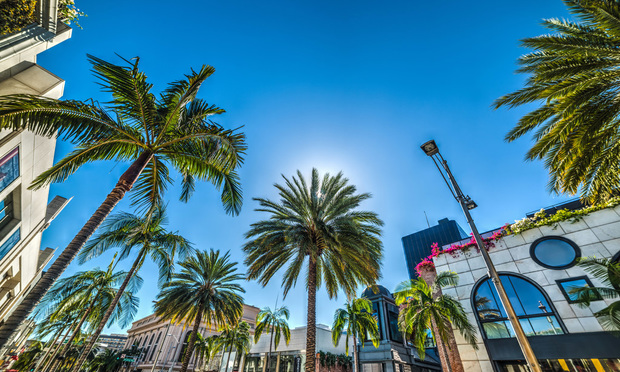LA Retail Sees ‘Flight to Quality’

LA retail leasing activity today reveals a pronounced flight to quality, with Class A and new spaces commanding premium demand despite limited inventory. LA retail vacancy currently sits at 5.8% with minimal construction – just 0.1% of inventory – and negative absorption.
The LA retail market shows a healthy 5.8% vacancy rate, despite having negative absorption of -879,255 square feet.
The San Fernando and San Gabriel Valleys are achieving positive rent growth versus the metro’s 1.0% decline.
The limited construction pipeline (736,401 square feet, mostly pre-leased) supports market health.
“The Los Angeles retail market continues to thrive,” Shauna Mattis, JLL managing director, told GlobeSt.com.
“Even with national trends of store closures, local fundamentals remain strong, especially in prime suburban corridors where demand and rent growth remain positive,” she said.
“We expect this momentum to persist through at least 2026, supported by limited new supply and the ongoing removal of obsolete space.”
Brandon Svec, the National Director of U.S. Retail Analytics for CoStar Group, told GlobeSt.com he’s seeing that space availability continues to loosen across the Los Angeles retail market, and demand formation has been among the weakest of major markets across the country.
CoStar shows net absorption in a worse state, having tallied -2 million square feet in the past 12 months.
Available space increased by another 200,000 square feet in Q2, which pushed the availability rate to 6%, its highest level in over a decade.
“Availability has risen for mid-sized boxes between 10,000 square feet and 25,000 square feet,” Svec cited. “The rate has increased almost 100 basis points since the start of the year to its highest level in a decade, as national brands have filed for bankruptcy or have closed underperforming stores across the region.”
Joann, Party City and Rite Aid are among the retailers to announce closures this year in Los Angeles.
“Population losses are at the forefront of those headwinds,” according to Svec. “The most recent census data showed slight growth over the past year; however, the population has declined by more than 3% over the past five years, around 340,000 fewer people.
“These losses have limited household formation, making it harder for retailers to justify expansion, especially in contrast to higher-growth Sun Belt metros.”
Investors turning to smaller, well-located assets
While older, obsolete, and inconveniently located retail assets are hurting and will eventually need to be repurposed for a higher and better use, positive trends for the Los Angeles retail market lie in location, tenant mix, and quality of the real estate itself, according to Zachary Streit, founder and president, Priority Capital Advisory.
“Overall, demand is concentrated in newer vintage, grocery-anchored centers, luxury corridors, and experiential retail tied to dense, transit-friendly neighborhoods,” Streit said.
“With limited new construction in recent years, investors are turning to smaller, well-located assets and mixed-use redevelopments that align with shifting consumer and urban trends.”
Land costs, labor costs, and financing are always the most challenging hurdles for retail developers on planned new construction and redevelopment projects in LA, Streit said.
“However, the fundamentals are strong, and if a developer can create a solid and realistic business plan, understand the micro-market’s demographics, and secure solid tenancy, the risk-reward profile is definitely in their favor.”
Reuse, redevelopment, tech tricks spark sector
JLL report: Developers are prioritizing redevelopment and adaptive reuse over speculative projects, enhancing property values through strategic repositioning rather than new builds.
Increasingly, developers are prioritizing redevelopment and adaptive reuse rather than speculative new builds, as these approaches strategically elevate property values and respond directly to market demand, according to Mattis.
“Repositioning assets ensures retail properties remain competitive and better aligned with retailer and consumer preferences, driving long-term success for the region,” Mattis said.
Furthermore, J. Wickham Zimmerman, CEO of Outside the Lines, told GlobeSt.com that shoppers need a compelling reason to visit and return to brick-and-mortar shops and malls. In 2025, the focus will shift to the experience, with longer dwell times being the key to success.
“There are studies that show that the longer shoppers stay on property, the more they spend,” Zimmerman explains. “Even a 1% increase in dwell time can result in a 1.3% increase in sales. This is where experiential retail can really shine,” Zimmerman said.
New technology, such as AI, can significantly enhance those experiences. Zimmerman and his team have technology that enables water features to interact directly with shoppers, mimicking their movements and even playing games with them.
Source: GlobeSt/ALM